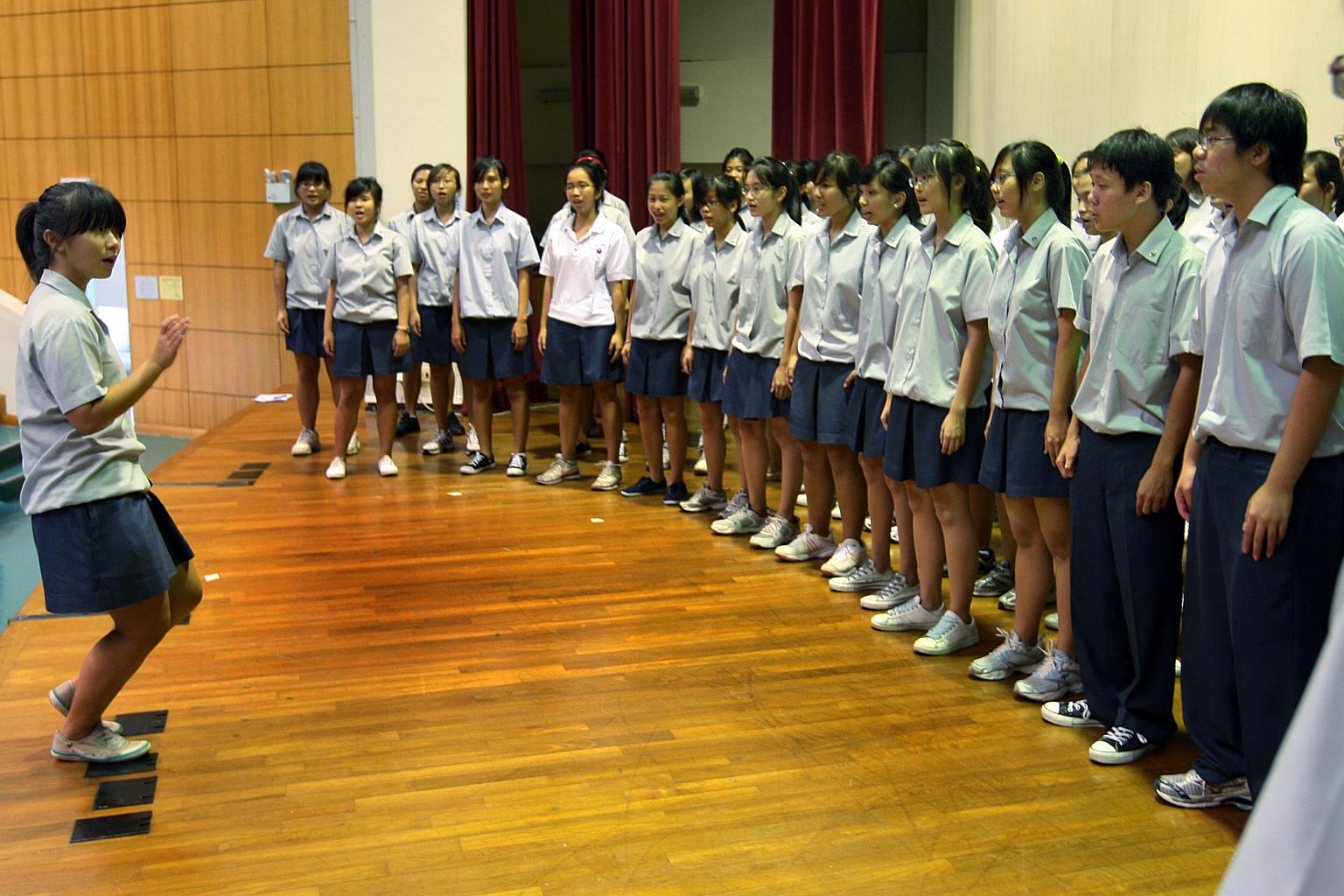More girls entered better JCs over past 4 decades: Study
Sign up now: Get ST's newsletters delivered to your inbox

Anderson Junior College choir members practicing for a performance in 2010.
PHOTO: ST FILE
Follow topic:
More girls secured places in junior colleges (JCs) that require higher entry scores over the past four decades, a study has found.
About 45 per cent of students who entered the better JCs in 1971 were girls, according to the study. This rose to 65 per cent in 2010.
Dr Vincent Chua, a National University of Singapore (NUS) sociologist, worked with Dr Swee Eik Leong, an economics lecturer at the University of Melbourne, on the study.
Dr Chua said it was aimed at finding out if school and neighbourhood characteristics reinforce inequalities in gender and ethnicity.
The researchers gathered student profiles of six JCs from 1971 to 2010 - from yearbooks - and made the best guess of ethnicity based on the names and pictures of the students. A total of 5,453 classes of students were studied using a data analysis program.
Dr Chua said that less than 1 per cent of the students were ambiguous cases, where their ethnicity could not be determined accurately.
Three regions, with differing proportions of residents in landed homes, were chosen. In each region, two JCs were picked - one with higher entry requirements and A-level results than the other.
In the study, the researchers termed the better school as "elite" and the other as "non-elite".
For instance, the central area - which covers areas such as Bukit Timah, Tanglin and Novena - was labelled as the wealthiest neighbourhood in the study. In that area, National Junior College and Catholic Junior College were the elite and non-elite schools, respectively.
In the north, the mid-range neighbourhood, Anderson Junior College was the elite school and Nanyang Junior College was the other. And in the east, Temasek Junior College and Tampines Junior College were elite and non-elite, respectively.
Dr Chua said the study showed that the gender gap in education had narrowed a lot over time.
The data also showed that neighbourhood characteristics amplified gender and ethnic disparities.
"Females are more highly represented in elite JCs particularly if those JCs are in wealthier neighbourhoods," said Dr Chua.
The average female share in the three better-ranked JCs over the span of 40 years was 57.5 per cent, compared with 54.7 per cent in the other, lower-ranked, three.
For Malays, their proportion in the stronger JCs was 4 per cent, as opposed to a 6.1 per cent presence in the other three institutions.
The share of Malays in the elite JCs fell over the 40-year period, but at a slower rate than the increase for females.
Dr Chua said: "Race seems to be more durable as a form of inequality than gender."
These findings were presented yesterday at a global conference hosted by NUS' Centre for Family and Population Research.
To ensure the study's accuracy, four sets of control variables were used. "These controls are extremely important because there are so many other competing reasons for gender and ethnic compositions in schools," said Dr Chua.
The researchers took into account the medium of instruction in classrooms, the JCs' entry requirements, the courses offered as well as demographic changes in the population - all of which could have affected the gender and ethnic composition of the JCs.
Amelia Teng

